Nothing strikes fear into my houseplant-loving heart more than going to water my plants and finding the tell-tale signs of spider mites.

Leaves that were lush and green start to look mottled with yellow blotches. And my heart skips a beat. A closer look reveals tiny spider webs in between leaves and stems. At this point, my pulse begins to race.
I know that if I look even closer, on the undersides of the leaves, I’ll see the tiny jerks sucking the life out of my beautiful plant.
They’re almost as annoying as fungus gnats.
(I’ll bet you never knew keeping houseplants was so thrilling.)
And that, my friends, is when I declare war.
If you have houseplants or a garden for any length of time, you’ll have a run-in with these microscopic bugs. It’s best to know what to do ahead of time so you can take action as soon as you find an infestation.
What the Heck Are Spider Mites?
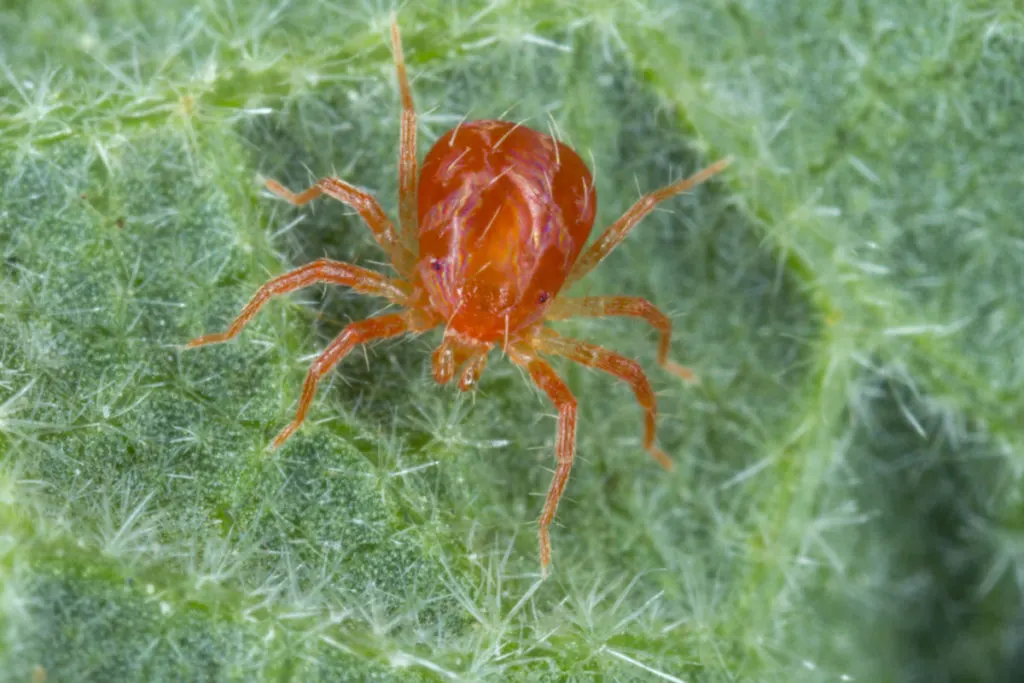
What are spider mites anyway? A spider? A mite? Are they aliens? Are they dangerous?
First, they aren’t dangerous to you and your pets, only to anything green and growing. They feed solely on plants.
Spider mites are a relative of spiders but not a true arachnid. They’re closer to a tick than a spider, again though they aren’t an issue for humans.
Where Do They Come From?
Everywhere.
Seriously, it’s nearly impossible not to have a problem with these guys at least once in your gardening lifetime.
Outside you’ll rarely notice them, as they have many natural predators who will take care of an infestation for you. But if left unchecked they can do real damage.
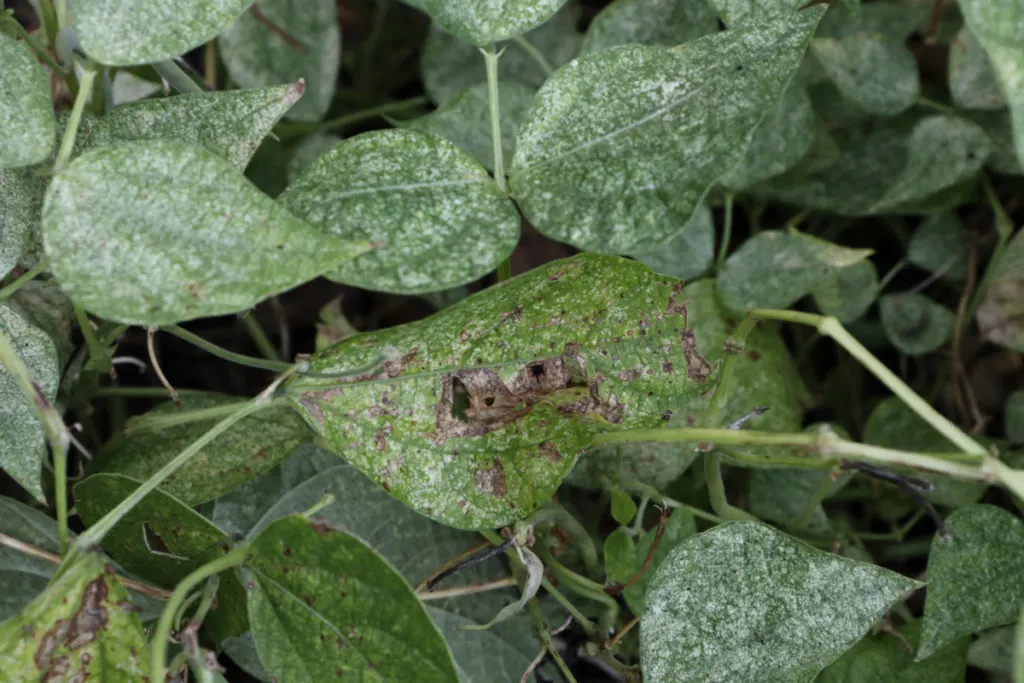
Inside it’s a little different.
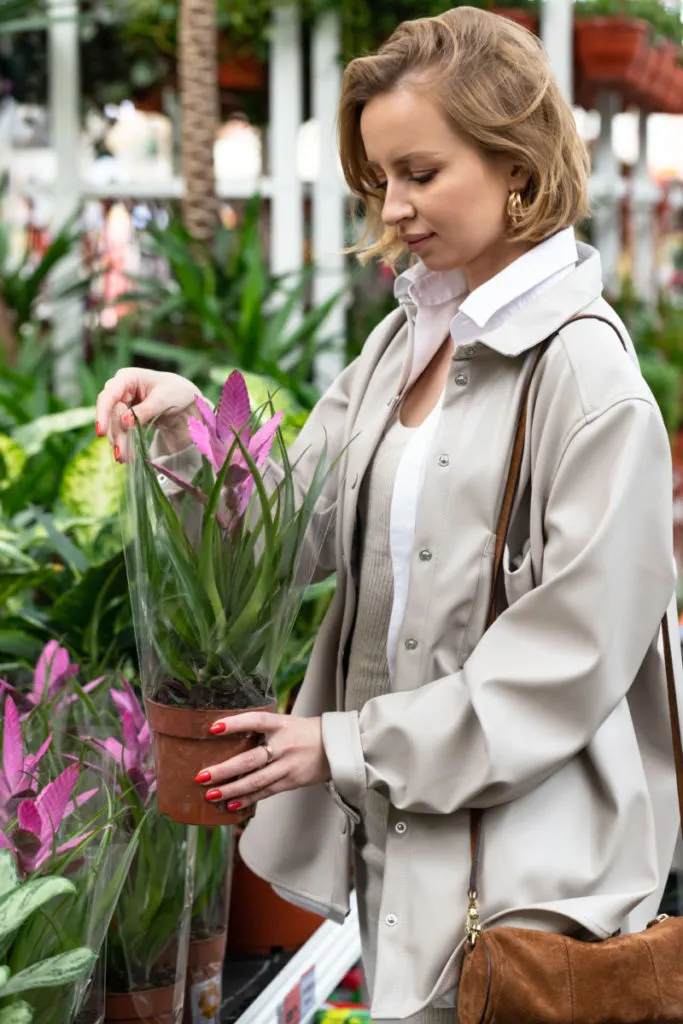
The most common place for spider mites to hide is on other plants. When you purchase a new houseplant, I highly recommend putting it in quarantine for a week or two before placing it near other plants. Keep an eye on it and wipe the leaves down with a damp cloth.
Spider mites also come into our homes on us and our pets, but there’s not much we can do about that situation.
How Can I Tell If I Have a Spider Mite Problem?
It’s rare to see the actual mites because they’re so small. We generally see the damage they do instead.
They look like little black or brown specks on the undersides of leaves.
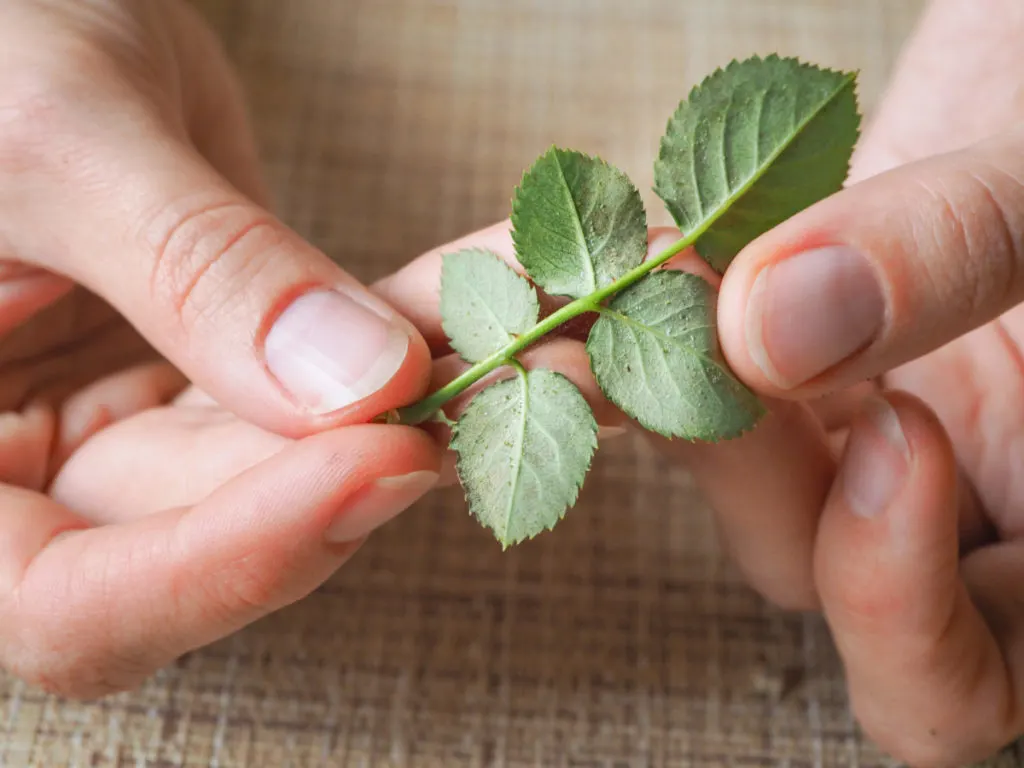
As I mentioned above, one day, you’ll be watering your plants and suddenly notice some of the leaves look funny. They will have a mottled yellow appearance. If you’re lucky, you’ll notice before your whole plant looks this way.
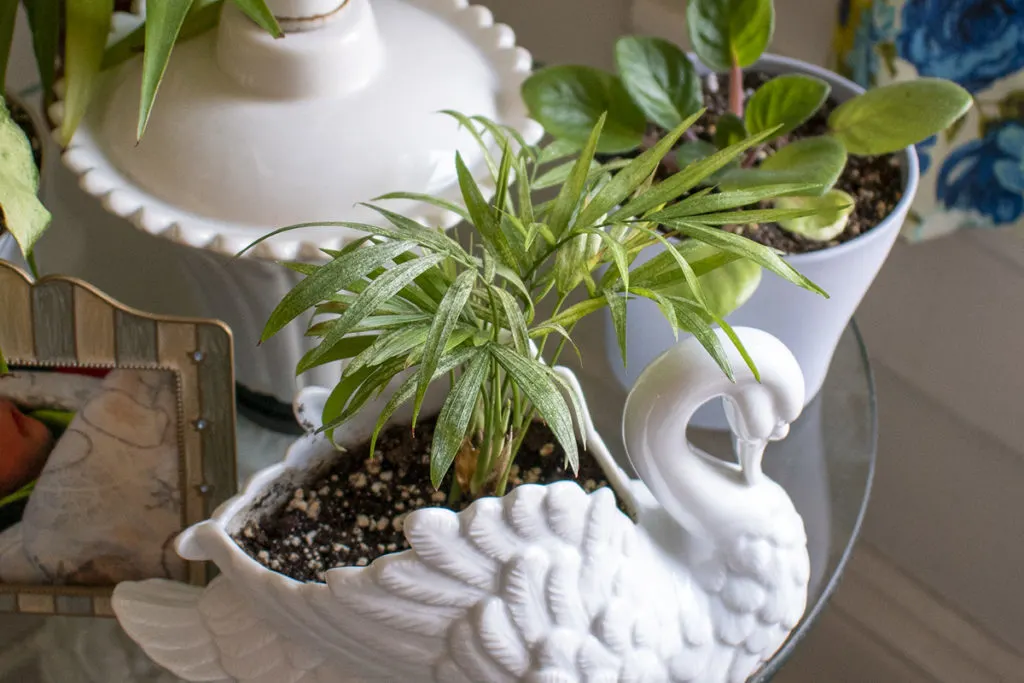
You may even see fine webbing on the plant where the leaf meets the stem.
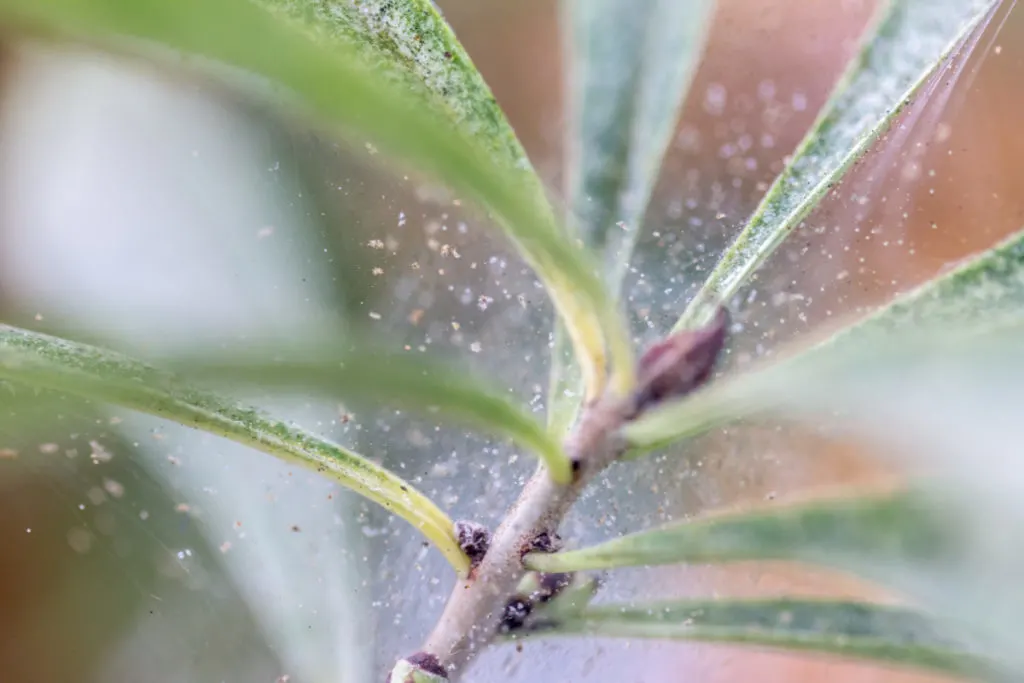
Depending on how long the spider mites have been nibbling on your plants, you may even see their tiny white skeletons. Look in the webbing and on the surface your plant is sitting on.
Gross.
How Do I Get Rid of Spider Mites?
While you can buy commercial products to treat spider mites, there’s no need to. The most effective treatments are already in your home, without all of the harmful chemicals.
Isolate
Okay, you’ve got an infestation, don’t panic, here’s what you do. Tie a bandana around your head Rambo style. Put a streak of black shoe polish underneath each eye and let out a mighty battle cry. (No seriously, this is an important part of the process.)
The most important thing to do is isolate the infected plant, keeping it away from your other plants.
At this time, it’s also a good idea to check your other houseplants to see if the spider mites have migrated and isolate any other sick plants you find.
Take a damp, soft, clean cloth and gently wipe down healthy plants’ leaves as a precaution.
Remove Dead Leaves
Trim off severely damaged leaves. Doing so will encourage the plant to put out new growth, rather than expending energy trying to heal itself.
Rinse Spider Mites Off
One of the easiest and simplest solutions for getting rid of spider mites is to rinse the plant’s leaves.
This is pretty easy to do. Place the pot in a plastic bag and tie it tightly at the base of the plant; this will keep the soil from getting waterlogged while you treat your plant.
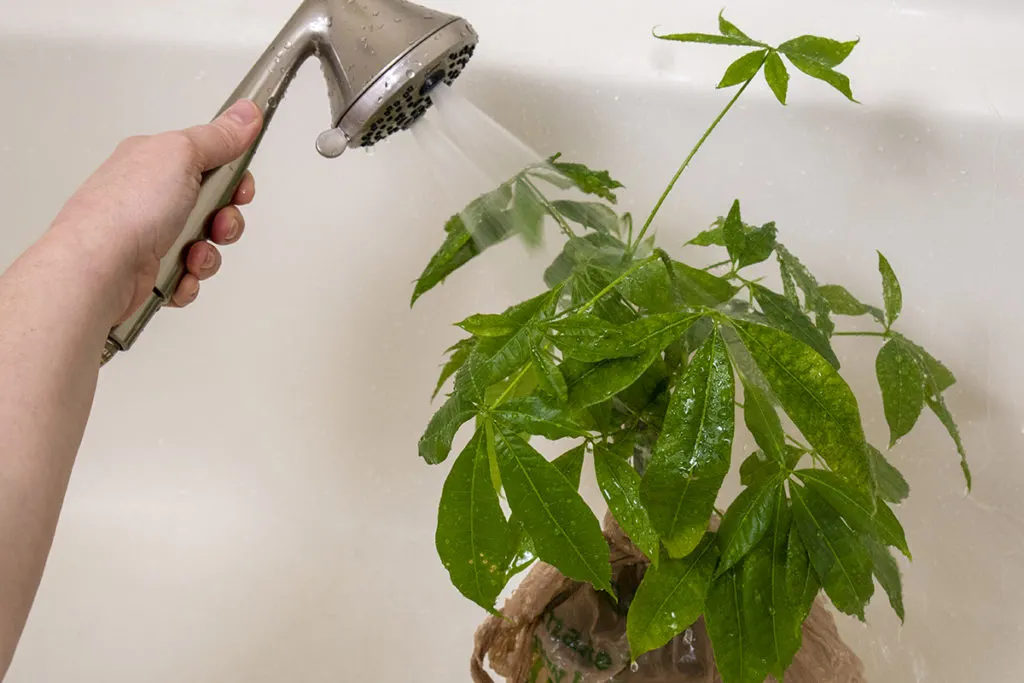
Now shower your plant. Spray the plant down with tepid water using the sink sprayer or your shower head.
For a small infestation, this may be all you need to take care of the problem.
Gently wipe the leaves dry and leave the plant in isolation for a couple of weeks. Keep an eye on it to be sure all the spider mites have been removed before returning it to its usual spot in the house.
If you see new spider mite damage, or you want to be extra cautious, try one of these solutions in addition to spraying down the plant.
Isopropyl Alcohol
Use a cotton pad soaked in rubbing alcohol and gently wipe down the leaves of the infected plant. Be sure to treat the leaves’ underside as well, as that’s where spider mites prefer to hide.
Homemade Insecticidal Soap
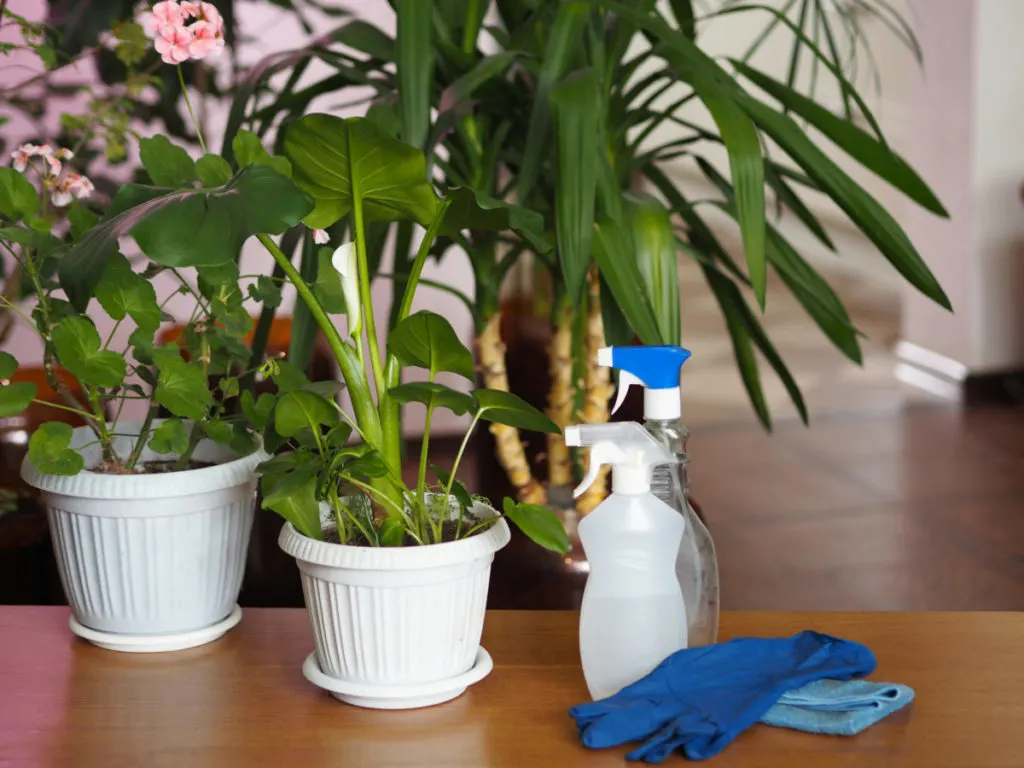
Mix one tablespoon of castile or liquid dish soap with one quart of lukewarm water. Either spray the plant using a spray bottle or dip a clean cloth into the soap and water solution and wipe down the leaves. Don’t forget the underside of the leaves.
It’s a good idea to repeat the treatment every few days for two weeks to be sure you’re killing the mature mites and their eggs. You need to disrupt the breeding cycle.
Once you’ve effectively gotten rid of the mites, it’s a good idea to spray the plant down again with water. This will remove any soap build-up on the leaves.
Neem Oil
Neem oil is a natural product that takes care of all kinds of pests, including spider mites. An evergreen tree native to many parts of India, neem is a popular natural pest control. The oil from the fruit and flowers of this tree are used to make neem oil.

When choosing a neem oil, read the package. Many popular brands have added insecticides or chemicals in them you don’t want to use. Look for 100% neem oil.
Again, you’ll want to spray the plant’s leaves thoroughly, being sure you reach the underside. Repeat as mentioned above, and finally, rinse the leaves in the sink or shower once you’ve finished the treatment.
Be Patient
It’s tough to find a plant in rough shape and nurse it back to health.
Just remember, those pesky mites were there for a long time before your plant got to a point where you could see the damage. It’s going to take time for the plant to heal and bounce back. Be diligent in checking the plant for signs of new or continued infestation, and be patient while it heals.
How To Prevent Spider Mites
Because of spider mites’ natural prevalence, the best way to avoid an infestation is to prevent one.
Create the Right Environment
Spider mites prefer a dry environment, so the best way to keep them off your plants is to create a more humid environment. As most houseplants are tropical, they’ll appreciate this and thrive.
Misting your plants regularly with a plant mister is a great way to do this. Another easy solution is to set up a humidifier in the room with your plants.
Using a warm-mist humidifier, especially in the winter, will keep your plants super happy.
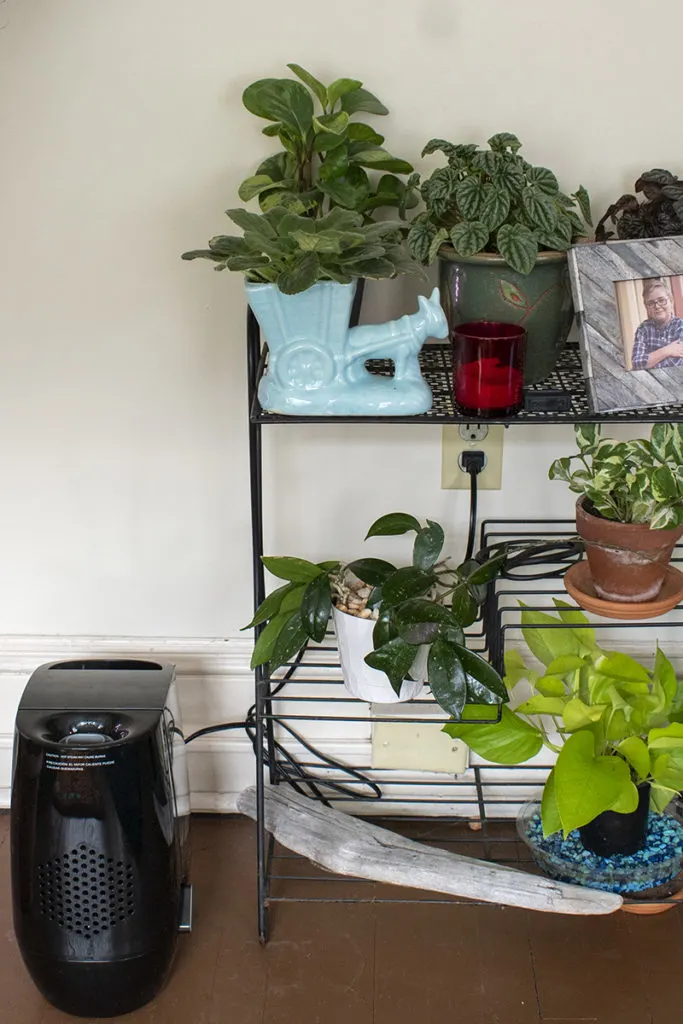
This past fall, I set up two warm-mist humidifiers in my home, one on either end of the house. Not only are my plants happier, but I’m happier too. The house stays warmer, as moist air holds heat more effectively. And I sleep better because I can breathe easier.
Humidifiers are a win-win for everyone.
Inspect Your Plants Regularly
Make a point of checking your plant’s health regularly. You can set a reminder on your calendar or make it part of your watering routine. (And you should have a watering routine.)
Check the soil, and check the leaves of your plants. Don’t forget to look at the undersides of the leaves and the area around their pots.
Wipe Leaves Down Regularly
I know, it sounds silly, and it’s just one more thing to add to your to-do list. However, wiping down your houseplant’s leaves regularly will do more than keep spider mites away.
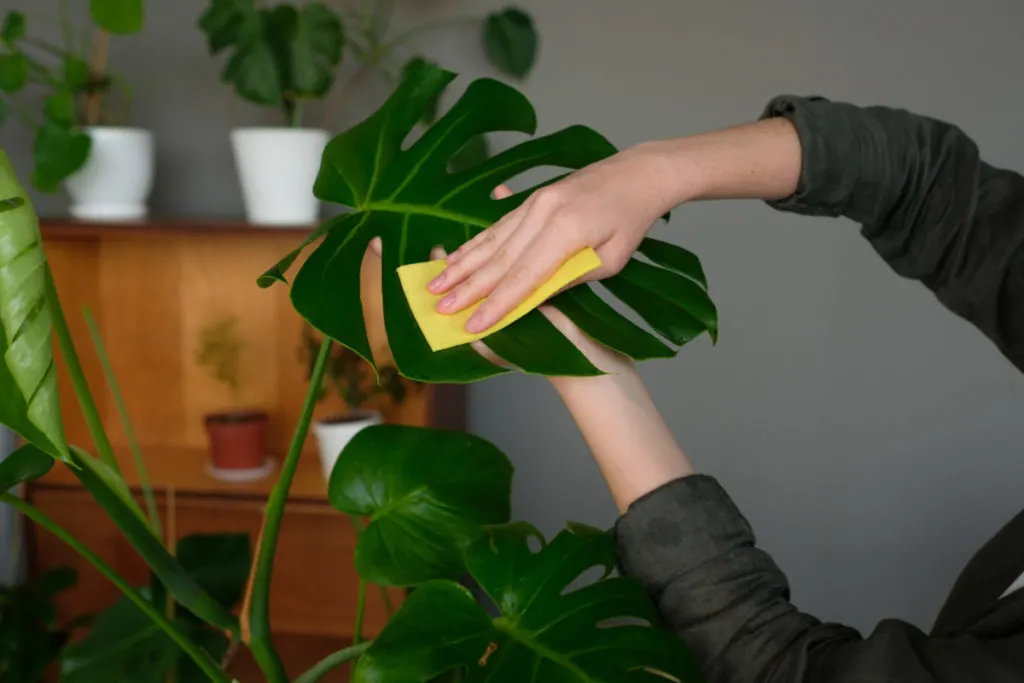
You’re wiping off dust build-up that invites disease and pests. And you’ll be more likely to notice problems before they turn into a big deal.
Not to mention, the leaves look nicer, healthier, greener. And isn’t that the point of keeping houseplants – to beautify your home?
Speaking of here’s 9 Gorgeous But Low-Maintenance Houseplants to Beautify Your Home.
Use a clean damp cloth and gently wipe the leaves, top, and bottom. Now stand back and admire your gorgeous plant.
Spider mites are annoying, and left unchecked, they can kill your favorite houseplant. But with a little time and attention, you can overcome them and even prevent them from being a problem in the first place.

Get the famous Rural Sprout newsletter delivered to your inbox.
Including Sunday ramblings from our editor, Tracey, as well as “What’s Up Wednesday” our roundup of what’s in season and new article updates and alerts.

